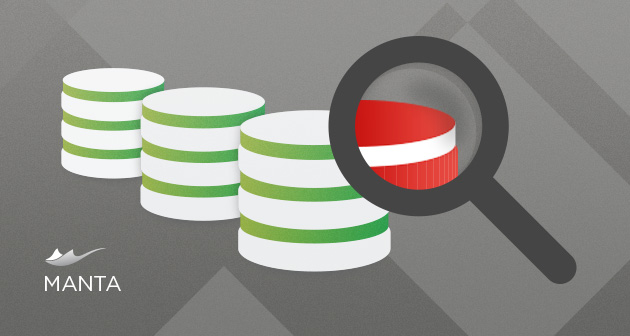
We all have a very good image of what our data warehouse should look like, and what roles and functions it should play in the company’s business intelligence environment. But that is rarely the reality. Our BI consists of more than just “perfect” structured data marts. It is usually filled with all kinds of quirks, the kind that only MANTA can deal with. Read on to find out how.
First there must be data, then there is a data warehouse
The usual reason why we don’t have a text-book perfect DWH in our company is that we simply never start from zero. Our developers don’t come to a blank (in this case empty) canvas where they can model and build an imposing BI environment from scratch. First there must be data, then there is a data warehouse. And when there is enough data in the company for someone to notice that it would be a good idea to start managing it, the developers are called to the rescue to build a DWH. They often get their hands on a load of unorganized data: non-integrated data marts that are usually just libraries scattered all over the enterprise.
It’s not like the data has a family tree
Since it’s enterprise data, not a fancy little dog, it probably won’t have a family tree of its own. The metadata might not match across various libraries in different departments of the company, and even the code itself probably won’t be in the same style. There is little to no hope that the different implementers in the various departments process data identically, leaving the entire DWH a very inconsistent place. At this point, the amount of time and financial resources spent on each individual data mart are so high that many developers just “go with it” or try to do their best to standardize and migrate the data together. This process begs for errors and quirks. They may not occur at the moment, but they are sure to show up when it’s least convenient, for example, when the company needs to analyze the entire data warehouse and get end-to-end data lineage for further data migration or compliance projects.
Rely on software, not people
Luckily, no matter how many sins the company has collected over years of poor DWH development and no matter how many quirks are hiding in your BI environment waiting to be unleashed in an unpleasant BI malfunction crisis, MANTA can deal with it. Better yet, it can uncover quirks you didn’t even know you had.
MANTA scans all the metadata sources directly or pulls them out of your metadata management solution. Then it can automatically find all the hidden logic and dependencies in the environment. That would be hard, or maybe even impossible, to do manually, depending on the amount of data accumulated in the BI environment and the size of the team working on the project. But either way, the time of those employees could be spent in a far better way than manually going through metadata sources. Once MANTA is able to find all the weak spots, it is easy for the customer to mend them all at one time.
Does this sound like something you might be struggling with as well? Let us know at manta@getmanta.com. We’ll help you figure something out.